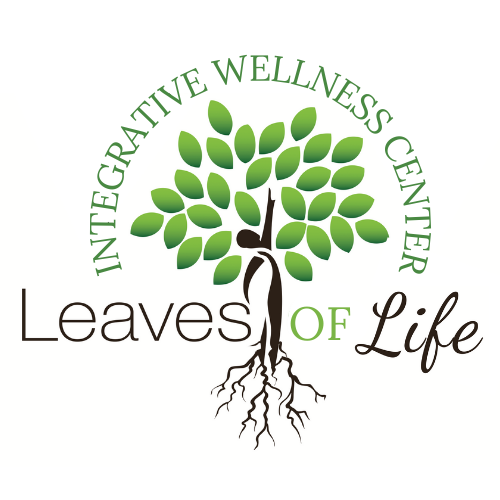Beyond the Mammogram
A guide to better breast health:
We all know regular mammograms are an essential tool in the early detection of breast cancer. But what do you know beyond the bumper stickers? Are you familiar with xenoestrogens? What about a thermogram as a non-irradiating, low risk mammogram alternative? What else should you be doing to ensure you're on the right track when it comes to managing your breast health?
A Place to Start:
We've put together a helpful guide to address that very question. As you'll see, many of these strategies would make sense for anyone trying to live a healthier, less toxic lifestyle... while other suggestions are more focused on reducing or minimizing estrogen and other hormone exposure.
Reduce Your Hormone Exposure:
Eat a diet of organic, whole, fresh foods. This will reduce your exposure to chemicals/xenoestrogens (xenoestrogens are chemicals that mimic estrogens and increase risk of hormone-fed cancers).
Drink clean, filtered water. This will help reduce exposure to xenoestrogens, drug residues and chemicals.
Limit or avoid hormonal contraceptive or synthetic hormone use.
Never take estrogen- , testosterone-, or DHEA-containing hormones without progesterone to balance them. Even in women who have had hysterectomies, breast tissue is still vulnerable to imbalance caused by “unopposed” estrogen or androgen use.
Upgrade Your Intake:
Consume foods and spices rich in antioxidants (kale, berries, curcumin/turmeric, basil, etc).
Regularly consume dark, leafy greens. They are a rich source of antioxidants, chlorophyll and activated folate - all important in promoting optimal detoxification and lowering cancer risk.
Eat a single serving of cruciferous vegetables daily. This reduces your risk of many types of cancer, including breast cancer. Examples of cruciferous vegetables include broccoli, cauliflower, arugula, brussel sprouts, bok choy, cabbage, collard greens, daikon, kale, kohlrabi, mustard greens, radish, rutabaga, and watercress.
Make omega-3 fatty acids a regular part of your diet to lower/prevent inflammation. Good sources include salmon, mackerel, walnuts, flax, and fish oil.
Avoid vegetable oils (sunflower, safflower, soy or corn oil) as these are easily damaged by light, oxygen and heat, making them harmful and inflammatory in the body.
For cooking - ghee, coconut, grapeseed, and olive oils are best. Use olive oil liberally, but avoid heating to high temperatures (add at end of cook time or use in salad dressings, cold foods).
Avoid eating charred meat or fat. This is a source of heterocyclic amines (HCAs), which are known to promote breast tumor formation. Even without charring, high heat will produce HCAs.
Avoid refined carbohydrates and sugar. These compromise gastrointestinal health and hamper the ability to clear toxins and estrogen.
Avoid processed foods or items grown with chemicals/pesticides or GMOs. These contribute to overall toxicity, inflammation and cancer risk.
Choose pastured, free-range poultry and eggs, grass-fed beef/buffalo/bison and wild caught fish to avoid estrogenic compounds and other toxins.
Aim for 20-30 grams of fiber per day. Fiber binds toxins and hormones carrying them out of the body, and provides food for “friendly” bacteria in the gut that help metabolize estrogen.
Optimize vitamin D. A serum level of 60-70 is ideal, and in my practice, I find the average dose necessary for Ohio adults is 5000 IU per day, though be sure to check levels to avoid toxicity or under-dosing. There are small sub-sets of patients who need more or less than average.
Ensure optimal iodine and selenium levels (I utilize a dried urine iodine test with my patients that assesses iodine, selenium, mercury, bromine and arsenic levels, all key factors in thyroid, breast and total body wellness).
Limit alcohol intake as much as possible—alcohol competes with liver clearance of estrogens.
Kick Caffeine:
Opt for green tea over black tea. Green tea contains approximately 4 times the amount of polyphenols and has less caffeine than black tea (caffeine content may vary).
Minimize caffeine - it competes for liver clearance of estrogen. Also, avoid conventionally grown (non-organic) coffee - it is often heavily sprayed with chemicals and pesticides that are estrogen mimics.
Lifestyle and Daily Practice:
Exercise strenuous enough to cause perspiration for 20 minutes at least 5 times weekly has been shown to reduce the risk of breast cancer by 40% (exercise encourages healthy lymph flow/toxin removal and helps balance blood sugar and hormones, all factors in breast health).
If you have a sedentary job, make it a habit to move/walk/stretch for 2+ minutes every hour.
Maintain a healthy weight.
Pregnancy and breastfeeding both lower the risk of breast cancer.
Optimize your sleep and minimize light exposure at night, which decreases melatonin.
Melatonin has antioxidant properties and has been shown to be helpful in breast and hard tumor cancers. If you’ve been diagnosed w/breast cancer, consider 20mg of melatonin nightly.
Practice stress reduction (meditation, yoga, breathing, recreational activities, etc).
Consider daily breast massage with castor or sesame oil or dry skin brushing (always toward the heart) to help mobilize lymph and drain toxins, fats and excess hormones. Breast tissue is mainly composed of fat, so has less blood flow than other parts of the body.
Address constipation if you are not having at least 2 bowel movements daily. The bowels are the most important channel of toxin and estrogen elimination.
Don’t smoke.
Avoid antiperspirants since sweating provides a channel for toxin elimination from the breast area, and instead opt for deodorants free of aluminum, parabens and xenoestrogens.
Optimize lymph flow (lymph flow removes toxins from the breast area) by wearing a comfortable and non-restrictive bra. Do not wear your bra to bed.
